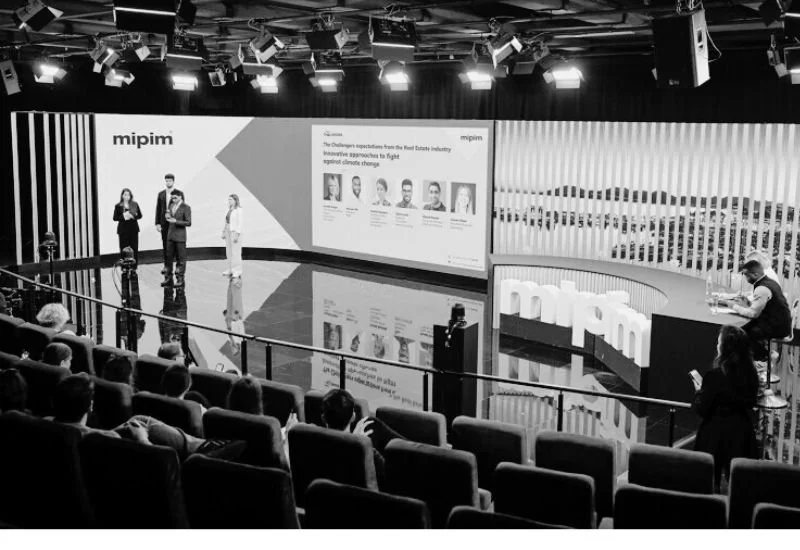If you've ever bought, sold, managed, or invested in property, you've likely encountered the frustrating reality of outdated processes. Endless email chains, scattered PDF attachments, and workflows that feel stuck in the 1990s are still common. Despite being one of the world's largest and most valuable sectors, real estate has been surprisingly slow to embrace digital transformation. While industries like finance, retail, and healthcare have spent the last decade modernising how they operate, real estate has lagged. This has led to persistent inefficiencies, frustration for everyone involved, and many missed opportunities for growth and innovation.
The shifting sands of expectation
Today, clients, tenants, and investors increasingly expect fast, clear, and digitally enabled experiences. Think about the seamless online banking experience or the instant gratification of e-commerce. Yet, the real estate sector has struggled to keep pace with these new demands. This growing gap between what people expect and what the industry can deliver isn't just an inconvenience; it threatens to erode trust, reduce relevance, and ultimately undermine long-term value.
What's holding real estate back?
The barriers to digital transformation in real estate are well-documented, with certain themes standing out clearly.
Cultural resistance: The people problem
Many real estate professionals view change with suspicion. It's not necessarily about being anti-technology, but rather the uncertainty that disruption brings. There's a genuine fear of losing control, relevance, or even being replaced by technology altogether. The human cost of change is often underestimated. For instance, our own AI in Real Estate 2025 Survey confirmed that a lack of expertise and inadequate resources are significant barriers, leaving many teams feeling under-equipped and unsupported. Consider adding a brief, anonymised anecdote here about a common fear or hesitation you've encountered.
Fragmented processes: The operational maze
Even with a genuine will to modernise, real estate processes remain highly fragmented and often paper-based. Different parties frequently use incompatible systems, or no digital systems at all. There's a striking lack of standardisation, which slows everything down and increases risk. Modernisation efforts often get stuck at the pilot stage or collapse due to deeply ingrained habits. Example: Think about the typical process for a lease agreement, how many hands does it pass through, and how many different versions exist?
Legacy technology: The digital debt
A surprising 61% of global real estate owners and investors still heavily rely on legacy technology, according to Deloitte’s 2024 Commercial Real Estate Outlook. While new, innovative platforms exist, integrating them with old infrastructure is expensive and technically challenging. This "digital debt" creates a significant hurdle. Furthermore, regulatory pressures add another layer of complexity, with 74% of respondents in PwC’s 2025 Emerging Trends in Real Estate report citing regulation as a major challenge.
Learning from those who've leapt forward
Real estate isn't unique in facing these challenges. But other industries have found ways to move forward, offering clear lessons:
Build a culture that welcomes change: Innovation must be seen as an opportunity, not a threat. Leaders need to set the tone and create an environment where experimentation is encouraged. Think about how agile development in tech companies fosters a culture of continuous improvement and iteration.
Balance modernisation with trust: Just as the financial sector has embraced digital tools without losing sight of trust and security, real estate can find ways to modernise without sacrificing professional judgment and the human element. Consider how secure online banking platforms have replaced physical branch visits for many routine transactions, building trust through reliability.
Invest in skills and support: Similar to healthcare's complex shift to digital patient records and telemedicine, upskilling and supporting people is crucial to making technology stick. This means providing training, resources, and a clear understanding of why changes are happening. For example, many hospitals invested heavily in training nurses and doctors on new electronic health record systems.
Prioritise user experience: Retail's relentless focus on customer experience should inspire real estate to make processes simpler, clearer, and faster for everyone involved, from potential tenants to investors. Think about the intuitive design of e-commerce websites like Amazon – everything is geared towards making the customer journey as smooth as possible.
A practical path forward
Transformation doesn’t have to mean tearing everything up and starting from scratch. Instead, it involves strategically rethinking day-to-day operations with achievable goals:
Automate to reduce manual errors: Free up staff from repetitive, low-value tasks like data entry or document generation. This not only minimises errors but also allows employees to focus on higher-value activities that require human intelligence and relationship building. Imagine automating lease renewals or rent collection reminders.
Leverage data for deeper insights: Move beyond intuition. Use data-driven insights to predict market trends, identify opportunities, and improve decision-making across the board, from property valuation to tenant acquisition. For example, data analytics can be used to identify optimal rental pricing based on neighbourhood trends and property features.
Standardise documentation and transactions: By creating consistent digital templates and workflows, you can remove significant friction from processes like property listings, contracts, and financial transactions. This speeds things up and reduces legal risks.
Boost operational efficiency for real commercial value: Ultimately, these changes lead to tangible benefits: reduced operational costs, faster deal cycles, improved client satisfaction, and a stronger competitive edge.
These are proven strategies in other industries. The tools are available, and the models work. The time for real estate to embrace them is now.
Why not contact Yiannis to talk about digital transformation?























